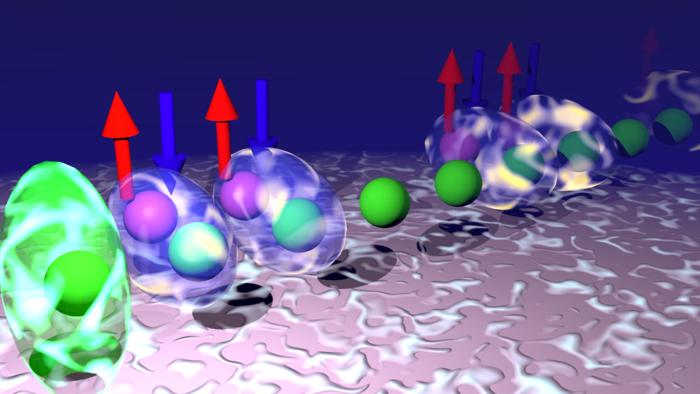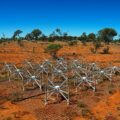While quantum computers may help advance computing power as Moore’s Law potentially enters its twilight period, the technology has been vulnerable to environmental disturbances, which a new magnetic quantum material could address.
Researchers from several institutions, including Chalmers University of Technology in Sweden, Aalto University, and the University of Helsinki in Finland, developed the new material. This exotic material is the kind of novel discovery necessary to make quantum computing more practical.
Quantum Behavioral Issues
At the tiny quantum scale, the physics of our world begins to change, operating under the different laws of quantum physics. In this world beneath the atom, particles simultaneously inhabit multiple states and interact at a distance in ways that defy traditional physics. Manipulating these states opens up the possibility of harnessing subatomic computing for problems that are beyond the reach of even modern supercomputers.
Unfortunately, quantum particles’ ability to change states presents a double-edged sword. In quantum computing, these units are called qubits, and they have proven to be just as susceptible to unintentional state changes driven by interference from temperature, vibration, and magnetic fields as they are to the purposeful shifts a computer intends when recording data. While initially imprinting the data on the qubits is possible, keeping it from corrupting is a significant challenge.
This results in unacceptable error rates for real-world applications, leaving quantum computing relegated mainly to the world of interesting tech demos.
A Material Solution
In pursuit of a solution to these quantum errors, researchers have turned to material science, seeking a safeguard against the outside noise that derails the qubits and corrupts the data. Topological excitations are a type of quantum state generated through and reinforced by the qubits’ material structure. This material support for maintaining the state has proven to increase stability, yet identifying a material that naturally does so has remained elusive until this new breakthrough.
“This is a completely new type of exotic quantum material that can maintain its quantum properties when exposed to external disturbances,” said lead author Guangze Chen, a postdoctoral researcher in applied quantum physics at Chalmers. “It can contribute to the development of quantum computers robust enough to tackle quantum calculations in practice.”
Magnetic Quantum Material
While the new solution operates on magnetic principles, earlier attempts at a qubit material looked in a different direction. That research focused on spin-orbit coupling, a quantum effect that generates topological excitations by aligning an electron’s spin with its orbit around a nucleus. However, only a few materials are compatible with this method, which limits its utility.
The researcher’s innovation relies on magnetism instead of spin-orbit coupling, a much more accessible and common factor that allows for the same topological excitation. Through simulations manipulating magnetism, the team successfully identified that robust topological excitations were possible through a material engineered in a one-dimensional Kondo lattice.
“The advantage of our method is that magnetism exists naturally in many materials. You can compare it to baking with everyday ingredients rather than using rare spices”, said Chen. “This means that we can now search for topological properties in a much broader spectrum of materials, including those that have previously been overlooked.”
Additionally, the team developed a tool for studying the topological properties of various materials, which can calculate the strength of their topological behavior, enabling continued research.
“Our hope is that this approach can help guide the discovery of many more exotic materials”, said Guangze Chen. “Ultimately, this can lead to next-generation quantum computer platforms, built on materials that are naturally resistant to the kind of disturbances that plague current systems.”
The paper “Topological Zero Modes and Correlation Pumping in an Engineered Kondo Lattice” appeared on March 18, 2025, in Physical Review Letters.
Ryan Whalen covers science and technology for The Debrief. He holds an MA in History and a Master of Library and Information Science with a certificate in Data Science. He can be contacted at ryan@thedebrief.org, and follow him on Twitter @mdntwvlf.

